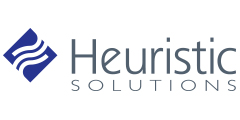For many in the certification community, certification is just one step along the journey of lifelong learning. After the bar of initial certification has been met, programs often consider tools to harness and direct the efforts of practitioners, promoting engagement and staying relevant in their ongoing professional development. This is where the reflective practice exercise fits into the recertification process.
Through reflection, practitioners can identify their own interests and areas for potential growth. With the right technical and operational foundations in place, organizations can help practitioners identify learning activities that are aligned with the priorities that emerge through reflection. These targeted insights enhance the recertification process with focused, effective lifelong learning to ensure ongoing competence, proficiency, and professional development.
Reflective Practice Exercises: What’s Needed?
To implement reflective practice as part of your recertification management, you’ll need to ensure you have the following in place:
- Competency frameworks;
- Competency mapping, and
- Education management.
Competency Frameworks
What factors affect positive professional outcomes in your industry?
For practitioners to reflect on and define their professional development and educational goals, they will first need a context within which to define their goals. They need something to compare their current skills and knowledge against. That “thing” is a competency framework.
A competency framework flows from the Job Task Analysis (JTA). If you have your JTA, you’ve already identified the knowledge, skills, abilities, and other characteristics (KSAOs) within the scope of your credentials and the domains of your certification assessments. The next step is to organize your findings into competencies.
Some organizations see the competency framework as a means to ensure that fulfilling their recertification requirements demonstrates competence equivalent to passing the certification assessment. Others see it as a way to clarify targets for on-the-job performance. According to Carla Caro, MA, ICE-CCP, and Patricia Muenzen, PhD, in “Understanding Job Analysis and Competency Modeling in the Certification Context” for I.C.E.’s Credentialing Insights online journal, “Competencies may provide a fuller picture of a role or profession, and a competency model might provide a richer picture of the role that is useful to multiple end users in addition to credentialing organizations.”
A competency framework incorporates multiple career phases (entry-level, mid-level, senior) and associated proficiency levels. You might also identify other non-technical competencies, such as leadership skills, critical thinking skills, and other non-technical skills. Competencies are dynamic because, as a profession evolves due to technological innovations, research outcomes, and other change factors, the JTA will also evolve. Both must be kept up to date.
Competency Mapping
Now that you have your competency model, can you map those competencies to other aspects of your certification management system?
This capability is key to effective and successful reflective practice. When you can map competencies for education or assessment functions, you unlock the ability to offer activities curated by competency and opportunities for deeper practitioner reflection.
Education Management
How do your practitioners find learning content that meets their goals within the requirements of the credential?
When organizations endeavor to implement continuing education management programs, we always encourage them to connect course approvals to identified competencies. That way, the foundations for reflective practice are already in place. Practitioners can find learning activities organized by competency framework domain areas, which adds value from a lifelong learning perspective. Then later on, if they add in a reflective or assessment component, they’ll have recommendations ready to go.
Assessment Tools for Professional Development
What if your reflective practice tools could use assessment data to reflect gaps by competency area?
Assessment tools can provide valuable feedback on whether a practitioner is showing improvement and offer opportunities for continued progress. Assessment data can be sourced from certification or recertification exams, self-assessments, supervisor assessments, or independent third-party assessors. For enhanced reflection, practitioners can compare the results of their self-assessments with third-party assessments. You can also create “diagnostic” assessments for practitioners to potentially “test out” of specific competencies.
Recommendations
What if you could cross-reference assessment data against your course catalog for targeted recommendations?
The real magic of reflective practice is found when competency models meet education management and assessments. Then, after you help practitioners identify their goals and gaps in the context of your competency framework, you can surface content aligned with focused improvements, professional aspirations, or both.
Why do recommendations matter? They remove the guesswork from professional development. If a practitioner has 20 hours and $400 for their CE, recommendations based on reflective practice help them wisely prioritize their investment of time and money.
LearningBuilder Offers Robust and Rich Reflective Practice Functionality
Organizations use LearningBuilder’s Reflective Practice tools for targeted professional development. Our Reflective Practice Exercise feature supports continuous competence and lifelong learning through alignment with identified competencies and corresponding learning opportunities. Practitioners can define their professional goals relative to a formal competency model, and the system will identify specific learning activities to achieve those goals.
As the years pass, you can ensure your practitioners continue to acquire the KSAOs to maintain competence in their roles. As they continue their professional journeys, this role may change. LearningBuilder will automatically adjust its proficiencies and gaps accordingly. As your industry changes, we can add or deprecate domain areas.
If you’d like to explore targeted professional development solutions for skills assessment, continuing competence, and lifelong learning, click here to schedule an introductory call.




